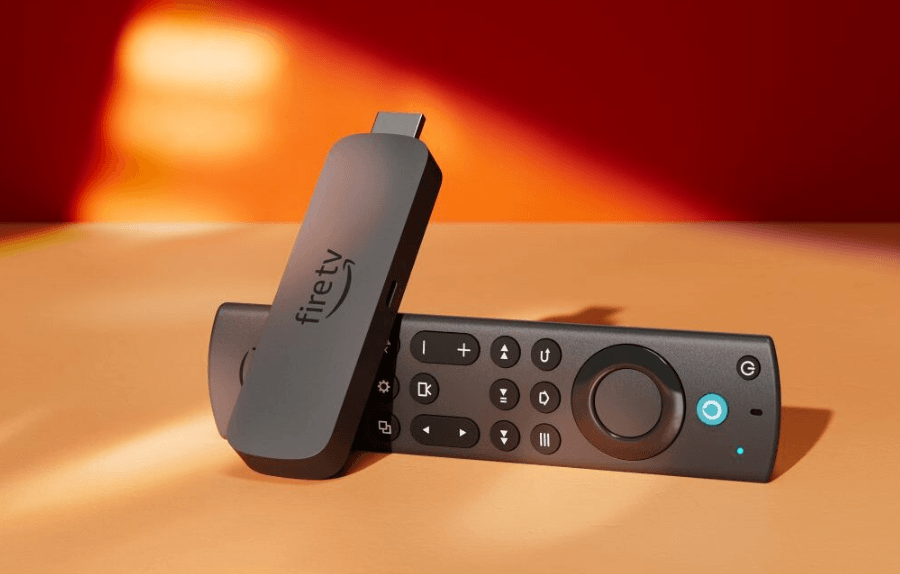
Amazon has shed more light on its plans for Vega OS, the new operating system software that powers the Fire TV platform on its latest Fire TV 4K Select streaming dongle.
The company confirmed that it will be expanding Vega OS to more Fire TV devices in future, but it hasn’t said when it plans to do so. It’s going for a phased rollout of the new software, and while it’s included in the Fire TV 4K Select, it’s not present on Amazon’s latest Fire TVs, which debuted alongside that dongle last week.
One thing to note is that Vega OS doesn’t revamp the Fire TV user interface, and it doesn’t have any significant new features. Rather, it’s more of a process, with Amazon looking to move away from the Android TV software that Fire TV was originally based on, so it can have more control over future development. So, over time, we can expect more significant differences to arise, just not immediately.
For now, Amazon Fire TVs will continue to run the Android-flavoured edition of Fire OS, including newer models that are in the pipeline.
The latest information on Vega OS comes from Lowpass reporter Janko Roettgers, who explained that Amazon has a bit of a challenge in terms of creating an app ecosystem for the Vega OS-powered Fire OS operating system. That’s because Vega OS is built on a Linux foundation, rather than Android, meaning that Android applications won’t be compatible with the new software.
In other words, TV app developers are going to have to write new versions of their apps, just as they do for other operating systems such as webOS and Tizen. To get around this, Amazon has decided to enable “cloud apps” to run on Vega OS devices. These are basically just Android apps, but they run on Amazon’s cloud-based servers rather than the Fire TV device. The content of these cloud apps – including the user interface – is streamed to the device like a video feed, the same as how cloud gaming is delivered.
Amazon confirmed to Roettgers that a select number of apps will be streamed to Vega OS devices while their developers work on building native applications for the new platform. The company didn’t name any specific apps that are getting this treatment, but its related developer documentation points out that it’s not going to do this for every app. Rather, Amazon will decide for itself which apps are worthy of being streamed. Moreover, it’s only going to do this for apps that offer video streamed content, rather than utilities or games.
So we can assume that it will try to make sure the most popular TV apps are available on Vega OS devices, while encouraging their developers to hurry up and create native versions. As for developers of less popular apps, they’ll just have to get writing their new code as quickly as possible if they decide they want to be available in Amazon’s nascent ecosystem.

The most important question is how streaming these apps will impact the user experience. The obvious concern is latency – the apps may feel a tad slow compared to their native versions, especially if someone is trying to navigate their menus or content feeds to try and find something to watch. That said, most cloud gaming services are not too bad in this regard, so hopefully Amazon will be able to make sure that they’re fast enough. However, a lot could depend on the quality of the user’s broadband connection.
Amazon told Roettgers that it will provide nine months of free cloud hosting to Android apps while their developers try to rewrite their code for Vega OS, but it’s not clear what will happen after this. For instance, there’s a distinct possibility that some developers might just decide they’re not going to bother with Vega OS versions of their apps, especially while its market penetration is so low. That raises the unwelcome prospect of apps suddenly disappearing from Vega OS devices, nine months after someone has bought them.
Developers may also be annoyed at Amazon’s decision to continue persevering with Android-based Fire TVs for the foreseeable future, as this means they’re going to have to keep updating two different versions of their Fire OS applications. That’s a lot more work, with very questionable benefits for the developers in question.
Further complicating the situation, Amazon has decided for reasons unknown that it’s not going to allow users to sideload applications onto its Vega OS devices, even though the software does support this capability. AFTVNews reported that the sideloading function is being restricted to developers only, and can only be accessed via a command line interface tool.
The inability to sideload apps on Fire TV may frustrate a great deal of users, for Android versions do allow them to do this, and many of its millions of users take advantage of this to access applications not available in the Fire TV store. It could well be that Amazon is motivated by a desire to prevent the use of illegal streaming applications that show pirated live sports and other content. Then again, it could also be about Amazon’s wish to maintain control over the Fire TV ecosystem. Or both, or perhaps neither, for there might be some other reason. Amazon didn’t say.
That said, Amazon isn’t alone in this endeavor. Google is also taking steps to prevent apps being sideloaded onto Google TV and Android TV devices, due to pressure from regulatory authorities.